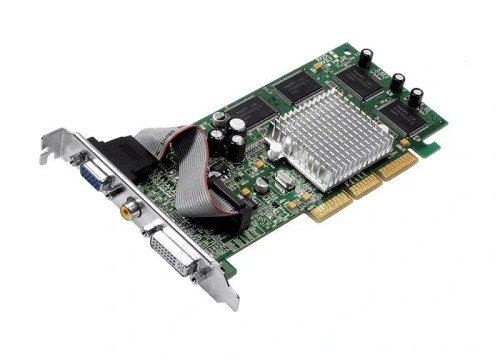Understanding Video Memory: A Guide to IT Hardware
Learn everything about Video Memory, its role in Computer Hardware, and how it impacts gaming and professional applications. Explore types, capacity, and performance.

In the world of IT hardware, understanding the importance of video memory is crucial for anyone involved in gaming, graphic design, or high-performance computing. Video memory (VRAM) plays a key role in ensuring smooth graphics rendering, high-resolution textures, and overall computer hardware performance. But what exactly is video memory, and how does it work? This guide will break down everything you need to know about VRAM, its types, capacities, and how to optimize it for better performance.
What is Video Memory?
Video memory, or VRAM (Video Random Access Memory), is a specialized type of memory used by graphics processing units (GPUs) to store image data and textures. Unlike system RAM, which is used for general computing tasks, VRAM is dedicated to handling graphics-related tasks, ensuring seamless visuals and improved gaming or professional performance.
Why is Video Memory Important?
The amount of video memory in a graphics card determines how well it can handle high-resolution textures, 3D rendering, and video playback. Whether you're a gamer, video editor, or 3D artist, having sufficient VRAM ensures better performance and prevents lag or stuttering. Here are some key reasons why video memory is essential:
-
Smooth gaming performance: Higher VRAM allows games to load high-resolution textures and render environments without delays.
-
Better professional workloads: Graphic designers, 3D modelers, and video editors require more VRAM to handle large files efficiently.
-
Higher resolutions and multi-monitor setups: 4K gaming and multi-display configurations demand more video memory to maintain visual clarity.
Types of Video Memory
There are different types of VRAM, each designed to optimize speed, efficiency, and performance in various computing tasks.
1. DDR (Double Data Rate)
DDR memory is the standard type of RAM used in computer hardware, but it was also used in early GPUs. However, modern graphics cards have moved to more advanced memory types for better performance.
2. GDDR (Graphics Double Data Rate)
GDDR is specifically designed for graphics processing. The most common versions include:
-
GDDR3: Found in older GPUs, offering lower bandwidth and speed.
-
GDDR5: A significant improvement in speed and efficiency, still found in budget GPUs.
-
GDDR6/GDDR6X: The latest generation with higher bandwidth and lower power consumption, ideal for gaming and professional tasks.
3. HBM (High Bandwidth Memory)
HBM is a newer video memory technology that stacks memory vertically, offering ultra-high bandwidth and lower power consumption. It is commonly used in high-end GPUs and professional-grade graphics cards.
How Much Video Memory Do You Need?
The required amount of VRAM depends on your usage. Here’s a general guide:
-
2GB-4GB: Suitable for basic tasks, older games, and low-resolution displays.
-
6GB-8GB: Ideal for mid-range gaming, video editing, and 1080p resolutions.
-
10GB-12GB: Great for high-end gaming, 3D modeling, and 1440p or 4K gaming.
-
16GB and above: Necessary for professional workstations, high-resolution rendering, and advanced AI applications.
Factors Affecting Video Memory Performance
Several factors influence how effectively video memory functions within a computer hardware setup:
1. Memory Bus Width
The memory bus width determines how much data can be transferred at once. A wider bus width (e.g., 256-bit or 384-bit) improves data transfer speeds, leading to better performance.
2. Memory Clock Speed
VRAM speed is measured in MHz or GHz. Higher clock speeds result in faster data access and smoother graphics processing.
3. Bandwidth
Bandwidth is the combination of memory clock speed and bus width. Higher bandwidth ensures that the GPU can access data quickly, reducing bottlenecks in performance.
Optimizing Video Memory Usage
To get the most out of your video memory, follow these optimization tips:
1. Adjust Graphics Settings
Lowering texture quality, resolution, and anti-aliasing settings in games can reduce VRAM usage, leading to smoother performance.
2. Close Background Applications
Applications running in the background may consume video memory. Close unnecessary programs to free up VRAM for primary tasks.
3. Upgrade Your Graphics Card
If your current GPU struggles with high-end gaming or professional applications, upgrading to a model with more VRAM can significantly improve performance.
Future Trends in Video Memory
As gaming, AI, and professional workloads advance, video memory technology is also evolving. Here are some trends to watch:
-
GDDR7 Development: Future GPUs may feature GDDR7 memory, offering even faster speeds and improved efficiency.
-
AI-Optimized VRAM Usage: Machine learning algorithms may help dynamically allocate video memory based on real-time needs.
-
Increased VRAM Capacities: With 8K gaming and high-resolution applications on the rise, future GPUs will likely feature even higher video memory capacities.
Conclusion
Understanding video memory is essential for making informed decisions when choosing a graphics card or optimizing your computer hardware for better performance. Whether you're a gamer, a content creator, or a professional, the right amount of VRAM can significantly impact your experience. By keeping up with the latest trends in IT hardware, you can ensure that your system remains powerful and future-proof.
What's Your Reaction?



















